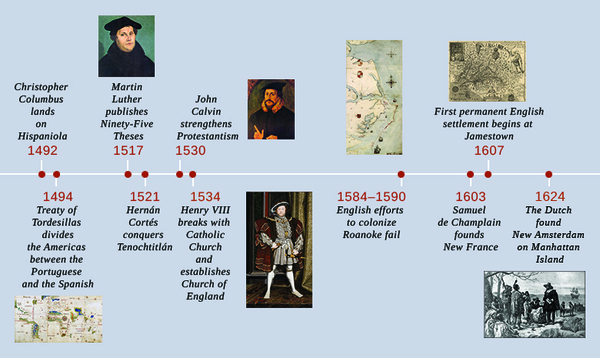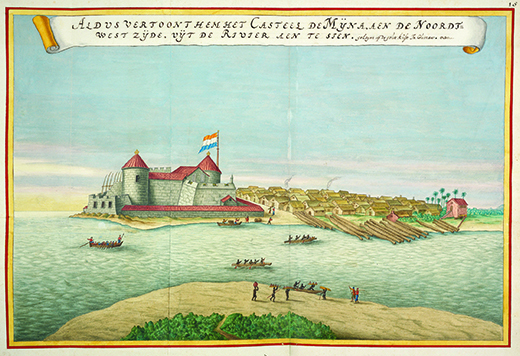| << Chapter < Page | Chapter >> Page > |

Portuguese colonization of Atlantic islands in the 1400s inaugurated an era of aggressive European expansion across the Atlantic. In the 1500s, Spain surpassed Portugal as the dominant European power. This age of exploration and the subsequent creation of an Atlantic World marked the earliest phase of globalization , in which previously isolated groups—Africans, Native Americans, and Europeans—first came into contact with each other, sometimes with disastrous results.
Portugal’s Prince Henry the Navigator spearheaded his country’s exploration of Africa and the Atlantic in the 1400s. With his support, Portuguese mariners successfully navigated an eastward route to Africa, establishing a foothold there that became a foundation of their nation’s trade empire in the fifteenth and sixteenth centuries.
Portuguese mariners built an Atlantic empire by colonizing the Canary, Cape Verde, and Azores Islands, as well as the island of Madeira. Merchants then used these Atlantic outposts as debarkation points for subsequent journeys. From these strategic points, Portugal spread its empire down the western coast of Africa to the Congo, along the western coast of India, and eventually to Brazil on the eastern coast of South America. It also established trading posts in China and Japan. While the Portuguese didn’t rule over an immense landmass, their strategic holdings of islands and coastal ports gave them almost unrivaled control of nautical trade routes and a global empire of trading posts during the 1400s.
The travels of Portuguese traders to western Africa introduced them to the African slave trade, already brisk among African states. Seeing the value of this source of labor in growing the profitable crop of sugar on their Atlantic islands, the Portuguese soon began exporting African slaves along with African ivory and gold. Sugar fueled the Atlantic slave trade, and the Portuguese islands quickly became home to sugar plantations. The Portuguese also traded these slaves, introducing much-needed human capital to other European nations. In the following years, as European exploration spread, slavery spread as well. In time, much of the Atlantic World would become a gargantuan sugar-plantation complex in which Africans labored to produce the highly profitable commodity for European consumers.
In 1482, Portuguese traders built Elmina Castle (also called São Jorge da Mina, or Saint George’s of the Mine) in present-day Ghana, on the west coast of Africa ( [link] ). A fortified trading post, it had mounted cannons facing out to sea, not inland toward continental Africa; the Portuguese had greater fear of a naval attack from other Europeans than of a land attack from Africans. Portuguese traders soon began to settle around the fort and established the town of Elmina.

Although the Portuguese originally used the fort primarily for trading gold, by the sixteenth century they had shifted their focus. The dungeon of the fort now served as a holding pen for African slaves from the interior of the continent, while on the upper floors Portuguese traders ate, slept, and prayed in a chapel. Slaves lived in the dungeon for weeks or months until ships arrived to transport them to Europe or the Americas. For them, the dungeon of Elmina was their last sight of their home country.

Notification Switch
Would you like to follow the 'U.s. history' conversation and receive update notifications?